The Breakdown
Pros
Cons
The Three Stars Are Here
The 2016 Bell Star was announced at the 2015 AIMExpo (Report) and described in our 2016 Bell Star Preview. The new Bell Star now comes in three different versions: The street/sport version (this review), the Race Star and the Pro Star.
Prices range from $449.95 for the street/sport version to (please make sure you’re sitting down!) $1,199.95 for the Pro Star. The three versions replace the Bell RS-1 (review) and the earlier (2010) version of the Bell Star (review), first announced in 2008. If you’re not a racer or serious track day addict, forget the Race Star and the Pro Star. The regular ol’ Bell Star is for you. We call it the “Street Star”. The 2016 Star is completely revised from the 2008/2010 version and that’s a good thing.
There are an amazing 5 helmet shell sizes and 6 EPS liners to span the head size range and the shell is a composite of aramid, carbon fiber and fiberglass. The Star is Snell M2015 certified in addition to meeting the DOT standard in the U.S.A.
A completely new face shield design; a new eye port configuration; a new liner system and lots more result in a much improved helmet from the previous version of the Bell Star. The internal shape hasn’t changed much however — it’s definitely narrow and the opening at the bottom of the shell is very tight.
So round-heads will have to look elsewhere…or go for the Bell Star custom fit (review), which is still available.
See Also: Helmet Buyers Guide, Helmet Review Home and all Bell Helmet Reviews.
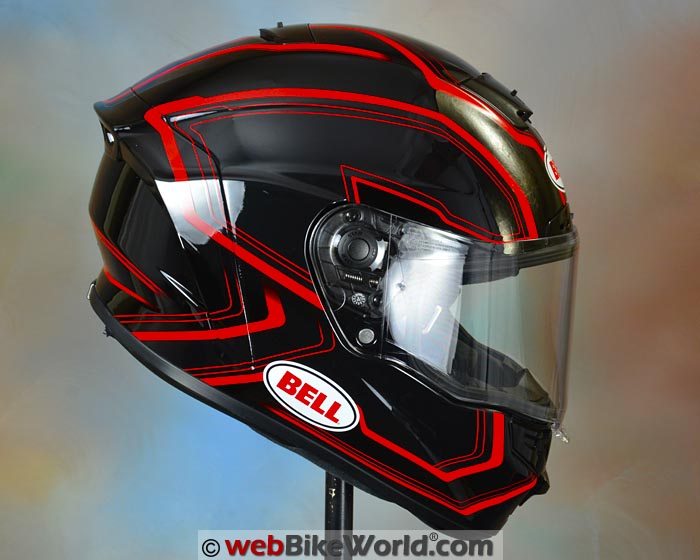
Street, Race and Pro Stars
The 2016 Bell Star comes in three different flavors: the street/sport Star shown here; the Race Star ($699.95+) and the Pro Star ($1,199.95+), which is identical to the Race Star but has a full carbon-fiber shell.
What’s the diff?
The Race Star is all carbon fiber and the Race Star and Pro Star helmets both have the Bell “Flex” liner system, which provides some movement or shifting of the liner parts on impact.
This is claimed to help dissipate the energy and duration of an impact by converting direct impact energy into some movement.
Bell says that the Flex system consists of three layers, “designed to manage energy from three potential impact scenarios: low, mid and high-speed.”
This type of energy dissipation technology is slowly finding its way into the general motorcycle helmet market, popularized (but not invented by) companies like 6D.
In fact, the first motorcycle helmet we know of that used a similar technology to dissipate some of the impact force was the Lazer Rider Superskin helmet we reviewed back in March of 2009.
The Superskin technology is applied to the outside of the helmet shell, while the Bell Flex and 6D technologies are on the inside of the helmet, probably a more practical solution.
And by the way, Bell Helmets just announced that a similar technology they call MIPS (Multi-Directional Impact Protection System) will be made standard on the Bell Qualifier DLX (review), MX-9 and MX-9 Adventure helmets for 2017. This will bring the technology down to “entry level” low-priced mass-market helmets and that’s a very good thing.
Good news, right? Well, here’s the bad news: Neither MIPS nor Flex technology is included in the street/sport version of the 2016 Bell Star we’re reviewing here, which is a shame.
And the good news? The base street/sport version of the Bell Star has a list price of $449.95, significantly lower than the Race and Pro Stars.
If you’re riding street, sport, sport-touring, touring, adventure or anywhere other than on a track, you’re probably better off with the street/sport version (Street Star?) anyway. That’s because this helmet is optimized for the real world and the Race and Pro Stars are optimized for the track in both the sightlines and ventilation angles.
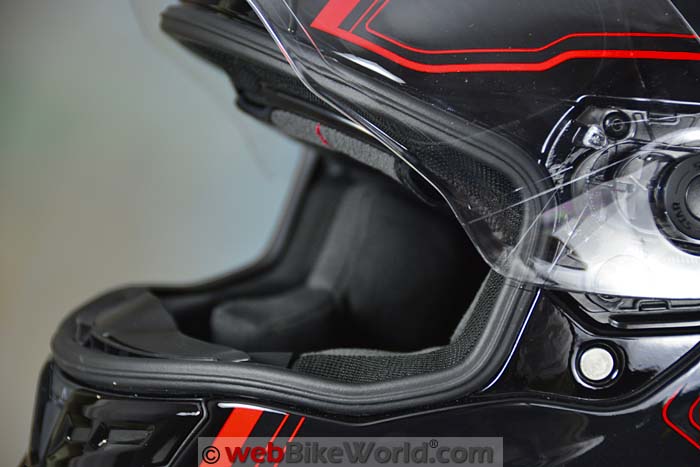
Bell Star Paint, Graphics and Overall Quality
This Bell Star in the “Pace” graphics, which will set you back another 50 bucks over the base price, is a real stunner, definitely adding some impact over basic black.
The Pace graphic pattern is available in a couple of other color panels also.
Having handled, worn and reviewed many Bell Star helmets since the modern generation’s 2008 release (and farther back than that, in the early 1970’s), Burn and I can state without hesitation that the 2016 Star is much, much better when it comes to quality, feel and performance.
The last version of the Star had a little bit of that “hollow” feel and sound and the liner and padding felt “lumpy”, like it had some edges.
This 2016 version is like comparing apples to oranges, it’s that different.
The paint and graphics and overall build quality are outstanding and right up there with the best, although there is still something unique about the feel and heft of a Shoei and Arai helmet that can’t be matched.
All of the moving parts on the new Star work positively with a solid feel and although there are a couple of loose thread areas in the liner of this early production sample (see the slide show below), the liner and padding is much more Shoei than it is old Bell Star.
The helmet also has several new and unique features and we’ll describe those next.
Score: The 2016 Bell Star has outstanding quality all around, in both design and execution.
Shopping Now? We Recommend
webBikeWorld has worked closely with RevZilla over the years to provide our testers with products to review. In addition to being a great site to shop from, they’re also a great partner. Both Amazon and Revzilla have a big selection of helmets from the great helmet manufacturers.
RevZilla
Free shipping on orders over $40
30-day no-nonsense return policy
Excellent selection of all major brands
Awesome pricing
Helmet Fit
One thing (and about the only thing) that hasn’t changed is the fit of the 2016 Bell Star compared to the previous version. The 2008 Bell Star had a blade-like internal shape that was well out at the narrow end of the helmet fit distribution graph.
(See the webBikeWorld Motorcycle Helmet FAQ page for more information on head shapes, along with all of our helmet reviews listed by shape on the Motorcycle Helmet Shapes page.)
The 2010 version normalized that narrow fit slightly and this 2016 version is about the same. So for all of you narrow-heads who have written recently asking “What happened to narrow helmets?”, rejoice. The narrow internal shape becomes amplified due to the very tight helmet opening at the bottom. The new Bell Star doesn’t appear to have a lot of curvature when you look at it, but it’s very narrow at the bottom. This probably comes from its racing heritage.
When slipping on the helmet, the size XL shown here is a very tight fit at the entry, although once on, it feels normal along the top on the inside. But the sides are very tight, even for an XL.
It feels more like a 59 cm on the sides and a 61 cm up top.
Despite the narrow fit, I (Rick) am able to get the new Star over my bulb-shaped head and I can even insert my Randolph Engineering Aviator sunglasses (review) with their straight temples and ride for an hour without discomfort.
And that’s a big surprise…to me anyway.
Bottom line? We’ll call this a “Narrow” to “Slightly Narrow” fit in webBikeWorld parlance.
It’s unknown why Bell is staying with the narrow fit profile while most of the industry has been moving to more of a “Neutral” fit over the last few years. But again, all of you narrow-heads should be very pleased.
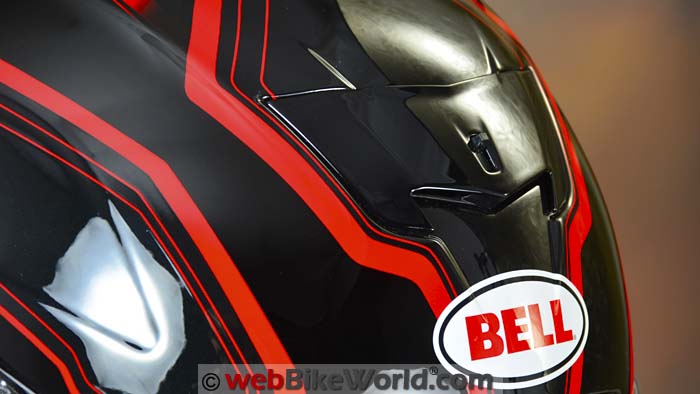
Sizing and Shape
The size L is rated for 59-60 cm head and that’s probably right, although we both tried a size large and couldn’t fit it over our head to get into it.
The XL and 2XL use the same shell size, with the XL rated for 61-62 cm and the 2XL for 63-64. Again, seems quite accurate based on our experience.
Liners and cheek pads in different thicknesses will be available soon for the 2016 Bell Star, so some customization will be possible.
And by the way, if you want a Star but the fit doesn’t fit, then you can always go for a Bell Star custom fit (review). That program, unique to Bell Helmets, does a laser scan of your head and then manufactures a helmet and liner to match.
My (Rick) Bell Star custom fit helmet is the only helmet that truly fits my “Earth” shaped head, which is widest at the temples.
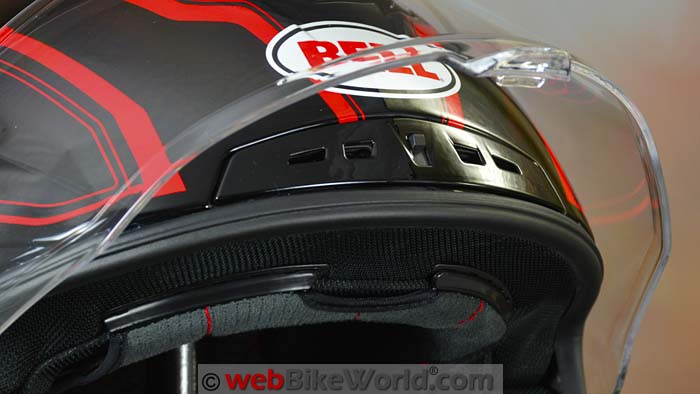
Liner, Fabric and Comfort
The liner and padding in the new Star is way better than the previous version.
It’s thick and comfortable and the “X-Static” liner with silver threads really does a good job at both moisture wicking and — hopefully — bacteria control.
Bell said that the X-Static fabric is “clinically-proven to provide bacteria and odor protection throughout the life of the liner.”
It’s interesting to note that the crown liner has a “floating” pad above it that can be easily removed — it’s not attached to anything. It sits above the normal liner, apparently to add some cushioning on top?
When it’s removed, the upper ventilation system seems to have more air flow, so depending on how the Star fits, you may want to either leave it in place or remove it.
Magnefusion Magnetic Cheek Pads
The Magnefusion cheek pads release so they can be pulled down and out of the helmet by emergency personnel to help remove the helmet faster and easier and without cutting.
However, we did notice an issue with this system, however. The cheek pad snap is designed to release when the cheek pad is pulled downwards, but the snap releases more easily than we’d like.
This seems to be more of a problem on the right side cheek pad than the left.
Because the bottom of the helmet along the neck roll is narrow, it takes a healthy squeeze to put the helmet on and this sometimes forces the cheek pads inward, enough to release.
The shape of the helmet at the chin bar is narrow also, so the bottom front corner of the cheek pads form a point that can cause interference as you pull on the helmet. You can see this in one of our photos below.
Some owners have complained that the cheek pads feel too tight at the front but this hasn’t bothered either of us once the helmet is on.
One more thing: there’s a built-in gap between the top of the cheek pads and the crown section of the liner, which forms a channel to make it easier to wear eyeglasses. The functionality will vary depending on the individual’s head shape, however.

More information on helmet fit can be found in the webBikeWorld Motorcycle Helmet FAQ page.
Also reference the chart that lists the helmet weights of webBikeWorld reviewed helmets and also by shape on the webBikeWorld Motorcycle Helmet Shapes page.
Score: The 2016 Bell Star gets an “Excellent” rating for fit with a thick and comfortable padding, noting the fit differences related above.
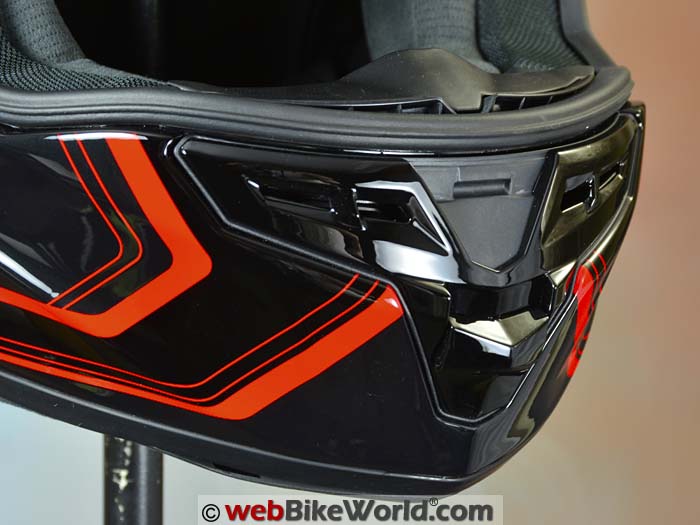
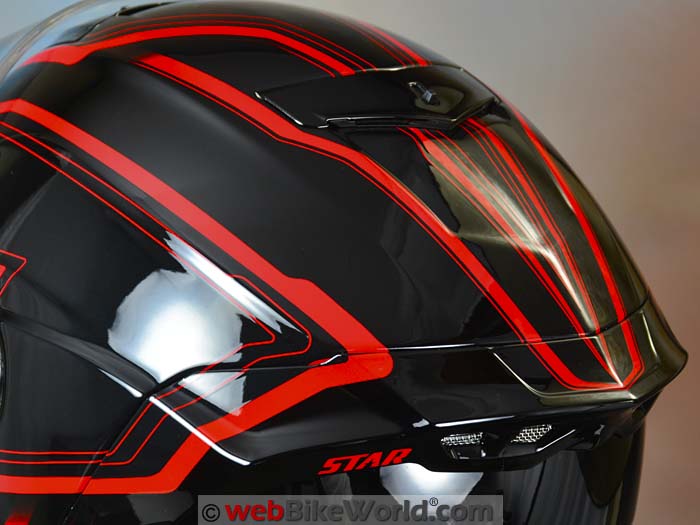
Eye Port and Visibility
Bell calls the new eye port design “Panovision”; it has a 5 mm lowered cutout on either side, along the bottom of the eye port on both sides.
It’s a nice feature and we appreciate the gesture but to be honest, I’m not sure how much it really improves the horizontal sight lines or adds to visibility.
This may be due to the fact that the XL and 2XL use the same shell size, which is the largest of the five.
The shell is big enough that the front and sides of the helmet have a lot of padding and EPS and that thickness brings the outer part of the shell farther away from the head and this can reduce the angles of sight out the sides, top and bottom.
This may not be a factor in the smaller shell sizes, just with the XL head size in the largest shell. Note that the Race Star and Pro Star have a different configuration to allow better vertical sight lines when the rider is leaned forward in the race tuck position.
Otherwise, the sight lines from the eye port are slightly better than average in the vertical and horizontal planes.
Face Shield Operation
The face shield system is new, with a centrally located lift tab on the Street Star (our name) that’s easy to find and operate with either hand when wearing gloves.
The system doesn’t have any detents, just lowered and fully raised. In the lowered position, the face shield can rest on top of the bottom part of the eye port to act as a city defogging position.
There’s a friction lock under the center lift tab and again, this makes it really easy to lock the face shield and release it without having to fumble on the left side like the Arai or Shoei (and other) systems.
There is no Pinlock included with the Street Star but there’s an interesting chin vent system that helps make up for this.

Score: The 2016 Bell Star rates an “Excellent” for the design and operation of the eye port and face shield.
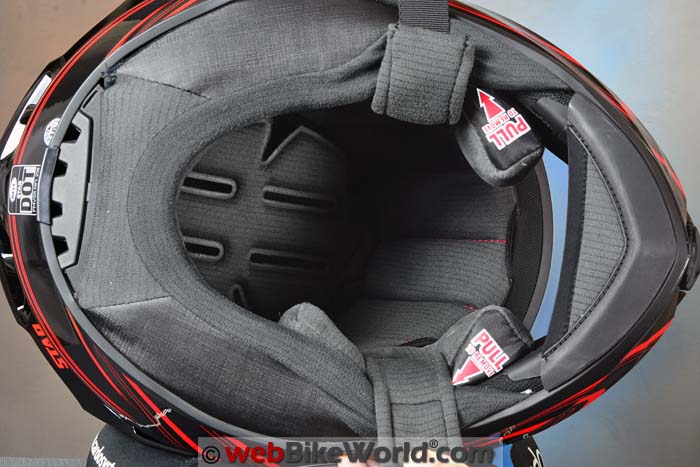
2016 Bell Star Ventilation
The new Star has a new venting system and it is very efficient. While it doesn’t look like anything out of the ordinary, it really does work well.
Note that the “Street Star” is designed for a more upright riding position and, in fact, the vents work better when the rider is upright than when leaned forward.
The chin vent is very easy to find and operate when wearing gloves; it’s centrally located, just under the face shield lift tab and the near location of both turns out to be a clever plus.
The chin vent opens four horizontal slots that flow air into a large plenum behind the plastic chin vent assembly.
Here’s the clever part: inside the chin bar are two large vent channels. They’re covered with a removable rubber/vinyl plug, and that’s a first as far as we know.
If you leave the plug in place, like you might during winter, the air from the chin vent is shunted towards the top of the chin bar and up on to the back of the face shield for defogging.
If you remove the plug (don’t lose it!), most of the air flows directly through the chin bar and some up on to the back of the face shield.
This system provides outstanding ventilation and the only thing better might be to make the plug a slider so it could be operated by the rider.
Brow Vent
Most of the Bell full-face helmets — even the less expensive helmets — have a brow vent. Brow vents don’t always work successfully however, because some of the air flow is usually blocked by the helmet liner.
That’s pretty much the case here. There are direct channels behind the brow vent that you can see, but they flow air on to the back of the crown liner, so it’s difficult to tell how much the vent affects ventilation.
Top Vent
The top vent on the Bell Star looks small but it somehow works. It flows air directly through channels down into the helmet, but make sure the helmet liner isn’t blocking the two vent holes above the forehead.
The vent channels in our helmet are blocked slightly but even before we discovered this (and the removable liner top described in the liner section above), the new Star has excellent ventilation up top.
It’s actually rather surprising that such a narrow top vent can provide this amount of air flow; it’s all in the design apparently…

Score: The 2016 Bell Star gets an “Excellent” rating for ventilation.
Intercoms?
The design of the helmet shell and EPS liner make it very difficult to fit a standard intercom mount in the new Bell Star, so you’ll probably have to depend on the stick-on type.
But using the stickies mean that smaller intercoms will fit better than larger intercoms, due to the molding on the outside of the helmet at the point where you’d mount an intercom.
The ear pockets aren’t very deep and there is no molded section for speakers, plus the EPS forms a sort of ceiling in the ear pocket.
Some owners have complained that the ear pockets aren’t big enough, with some even resorting to carving away a section of the EPS to fit (not recommended).
Bottom line here is that the new Bell Star isn’t really intercom-friendly unfortunately.
Where to Find Bell Star Helmets
webBikeWorld has worked closely with RevZilla over the years to provide our testers with products to review. In addition to being a great site to shop from, they’re also a great partner. Both Amazon and Revzilla have a big selection of helmets from the great helmet manufacturers.
RevZilla
Free shipping on orders over $40
30-day no-nonsense return policy
Excellent selection of all major brands
Awesome pricing
Amazon
Free shipping (with Amazon Prime)
30-day return policy
Excellent selection
Competitive pricing
Sound Levels
The new Star is generally slightly quieter than average, but as usual, it all depends.
When riding behind a large windscreen, the helmet is very quiet and it’s also quieter than average when riding with no windscreen at all.
The top vent does create some noise however, especially if a shorter or mid-chest windscreen directs air and turbulence towards the top of the helmet.
In that case, when the top vent is blocked, the noise decreases dramatically, which demonstrates that the vent is the biggest contributor to volume.
But if your windscreen directs the air so that it does not focus on the helmet, then the Star is very quiet.
It’s a tradeoff, because the outstanding ventilation probably wouldn’t be if the vent system and vent channels were smaller.
So overall, we’d say that the noise levels for the new Star are generally lower than average for a full-face helmet.

Note that our helmet evaluations are a combined effort of several riders over time on different types of motorcycles with and without windscreens.
Evaluators wear correctly fitted, high quality ear plugs (even when evaluating motorcycle intercom systems).
Always protect your hearing when riding a motorcycle. See the wBW Earplug Reviews for more information on choosing and wearing earplugs.
Note also that perceived noise levels will vary, depending on the individual.
Noise can be caused by many factors, including helmet fit, the type of motorcycle and windscreen, wind speed and direction and even the rider’s clothing.
For more information on helmet noise, visit the wBW Motorcycle Helmet Noise page.
Score: We’ll give the Star an “Excellent” rating for noise control.
wBW Video: 2016 Bell Star
2016 Bell Star Helmet Weight
Certainly the Snell M2015 certification accounts for some of this, but still…
Without an internal sun visor and without the Bell Flex liner system, there’s really nothing else to account for the weight, especially since this is a composite shell, supposedly designed to reduce weight.
The previous 2010 version of the Bell Star weighed just 1628 grams. The SCHUBERTH S2 (review), for example, weighed 1712 grams in size XL.
The Shoei RF-1200 (review) in size large weighed 1608 grams and an Arai Signet-Q (review) in size large weighed 1624 grams.
The Shoei X-Fourteen (review), probably the closest competitor to the Bell Star, weighed 1750 grams.
In fairness, we were surprised to find that the 2016 Bell Star was this heavy, because it doesn’t feel it on the road.
All of these weights for full-face, flip-up and open-face helmets are available on the wBW Motorcycle Helmet Weights page.
Also see the chart that lists the helmets by weight and shape on the wBW Motorcycle Helmet Shapes page.
Score: The 2016 Bell Star gets a “Poor” rating for weight.
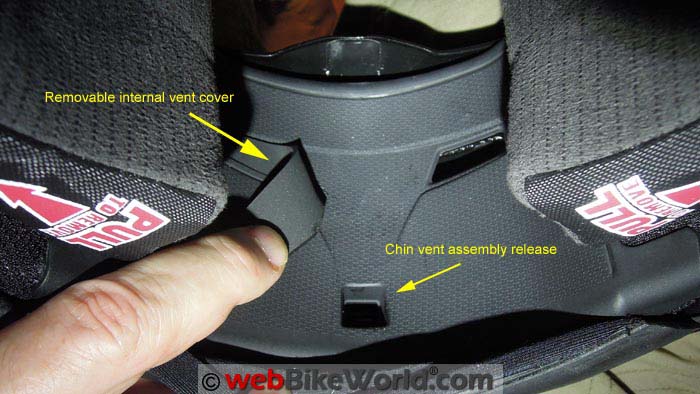
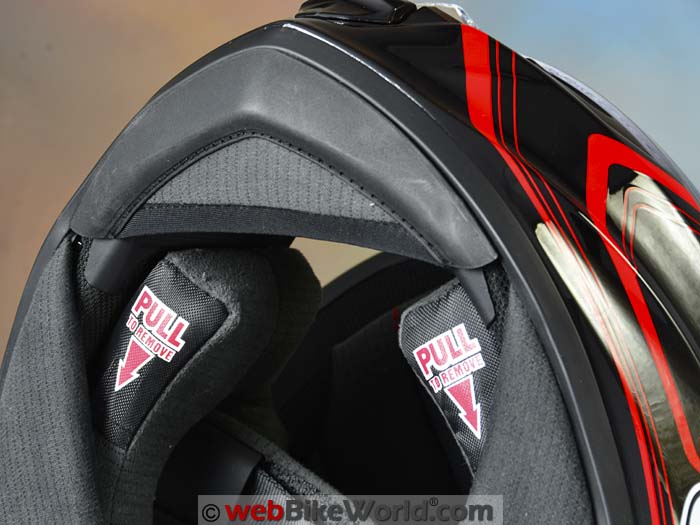
Miscellaneous
The Star has the Magnefusion magnetic chin strap retainer that works well. This version has a plastic pin that fits a hole to help keep it secured.
The 2016 Bell Star meets the DOT standard in the U.S. and it’s Snell M2015 certified.
wBW Opinionator: 2016 Bell Star
Picks…
- Outstanding build quality.
- Ventilation system.
- Comfortable.
- Solid feel.
- Visor lock and removal.
- Available colors/graphics.
Pans…
- Weight.
- Very specific fit.
- Liner stitching.
- No visor detent.
- Difficult to fit intercom.
- No Pinlock.
Conclusion
The new Bell Star is an improvement over the previous generation in every way — except its weight, which is mysteriously much greater than expected.
The helmet will surely be considered a less expensive alternative to something like the Shoei RF-1200 or various Arai helmets and that’s a valid comparison.
It’s very well made and feels more solid than the previous Star generation. It’s also comfortable and relatively quiet and it has outstanding ventilation.
The price is right also, even without a discount.
The only real issues are that the fit is very specific for narrower heads, so the new Star may not be for you if you have a round or even neutral shaped head.
wBW Review: 2016 Bell Star Helmet
Buy A Bell Star Helmet
webBikeWorld has worked closely with RevZilla over the years to provide our testers with products to review. In addition to being a great site to shop from, they’re also a great partner. Both Amazon and Revzilla have a big selection of helmets from the great helmet manufacturers.
RevZilla
Free shipping on orders over $40
30-day no-nonsense return policy
Excellent selection of all major brands
Awesome pricing
Amazon
Free shipping (with Amazon Prime)
30-day return policy
Excellent selection
Competitive pricing



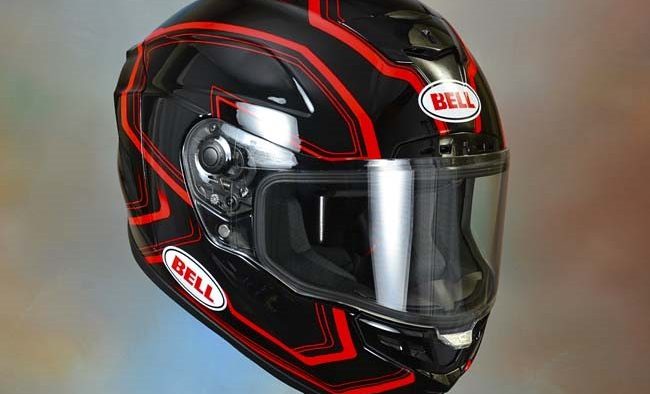
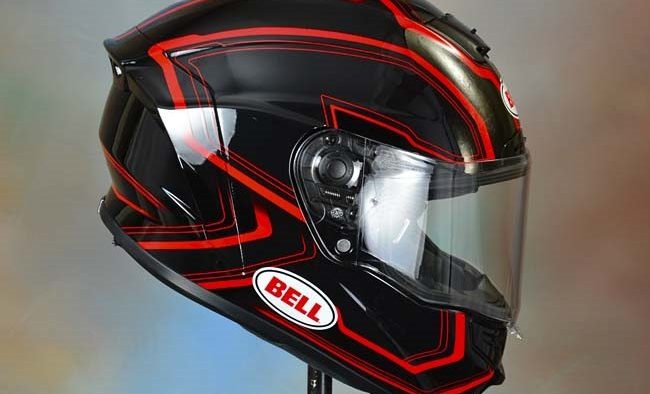
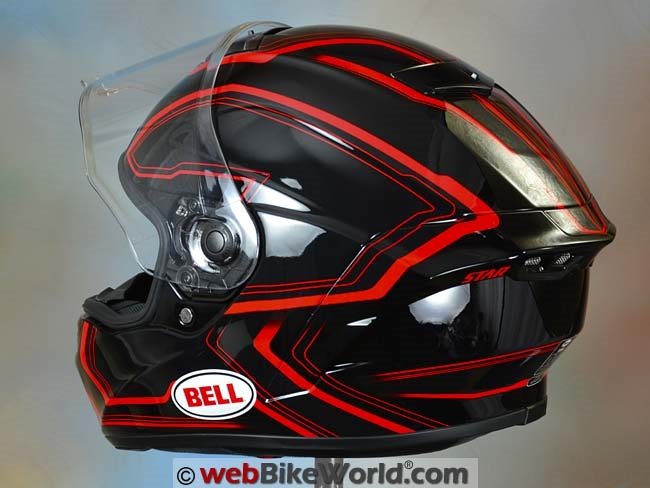
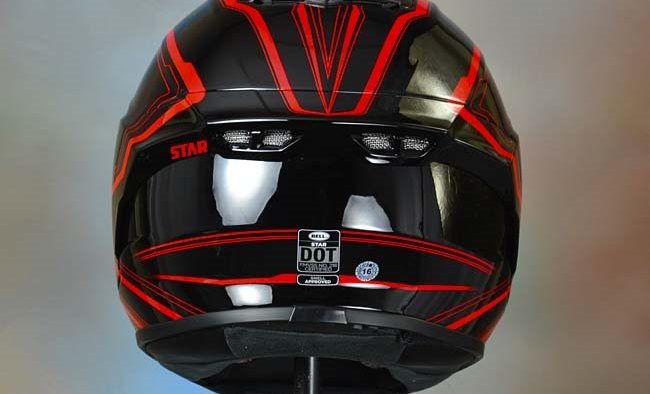
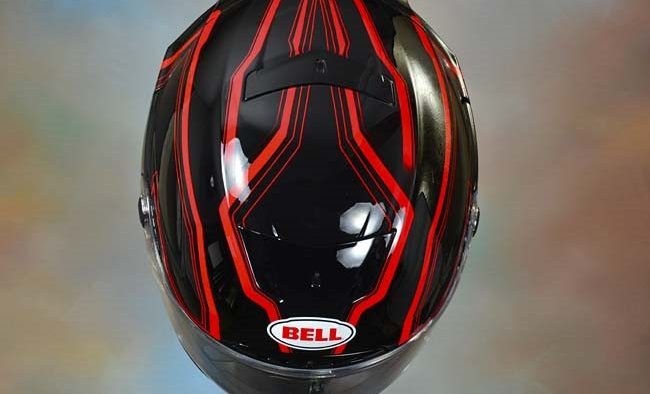


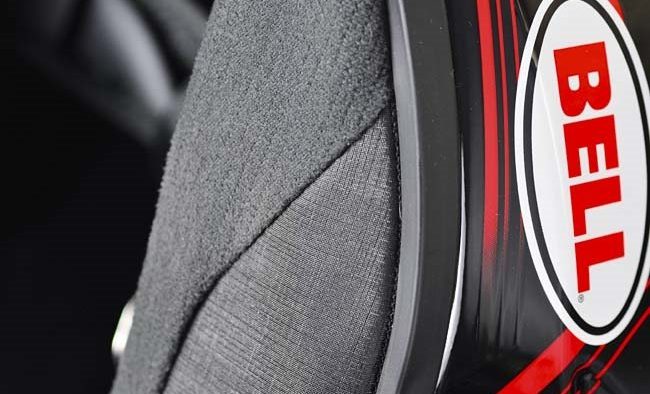
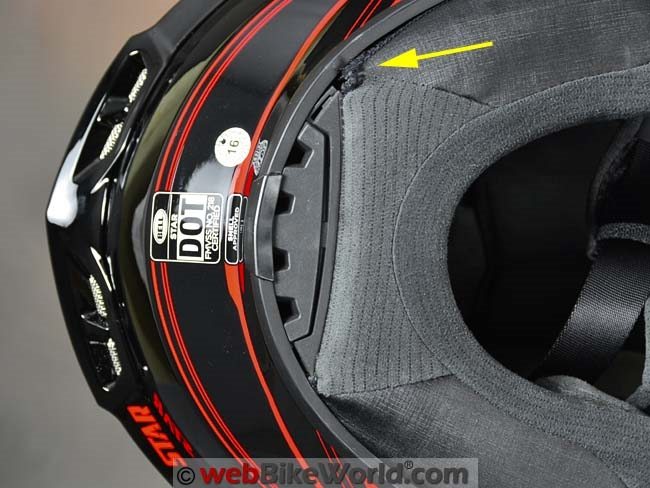
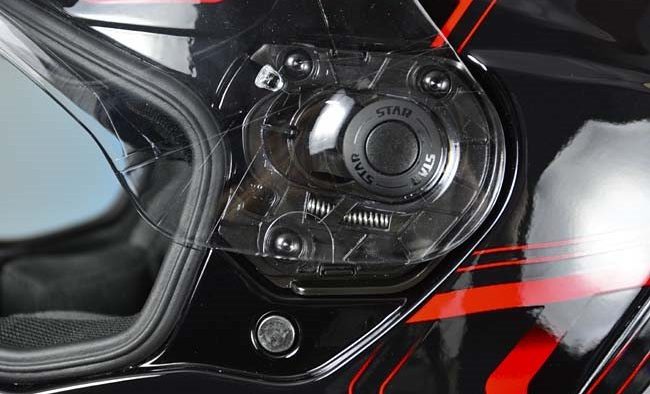


I have the current model, the Bell Star MIPs, which is almost identical, except for the addition of MIPs, to the Bell Star reviewed here. MIPs is Bells system to deal with rotating blows to the head. Most of what is written here applies to it as well with a few differences. The shell and visor are the same, only the crush liner differs. The MIPs version has a 5 Star Sharp rating as well as is Snell approved.
The newer MIPs model has deeper ear pockets for easier installation of bluetooth headsets.
No issues with liner stitching in upgraded MIPs version.
As described in the review, very specific fitment. Fits narrower heads better than the Shoei RF1200 but does not fit wide heads as well. Liner is adjustable for long and short foreheads with removable pad on crown.
Visor has factory anti fog treatment that works exceptionally well but Pin Lock visors are still an option.